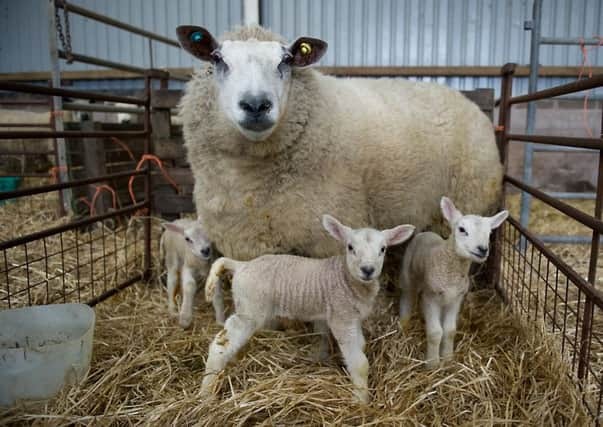Sheep sector review is something of repeat exercise
This article contains affiliate links. We may earn a small commission on items purchased through this article, but that does not affect our editorial judgement.


But the 12 good men and women of the sheep sector review body appointed by the previous rural affairs minister, Richard Lochhead, would be muttering: “No, I think we have every corner covered.”
Thus they would answer their own question as they checked over the list recommending improvements in everything from research to new processing facilities with education and information sharing thrown in.
Advertisement
Hide AdAdvertisement
Hide AdThe recommendations are a lengthy wish list. No money was required to bring out the review although there was a suggestion that if all the recommendations were taken up, the industry would be better off by about £20 million per year.
If there was a casualty in the whole exercise, it was the English language. For example, recommendation two refers to “farm-based knowledge exchange allowing peer-to-peer learning of best practice”.
Coincidentally, exactly 16 years almost to the day, a previous report on the sheep sector was published. In that case, Andrew Dewar Durie, a respected figure in the whisky industry, had been asked by Ross Finnie, the then farm minister, to look at the problems in the sheep industry.
Looking back, the Dewar Durie report was ahead of its time, even if the author was roundly and unfairly criticised by some in the industry who preferred not to look to the future.
The problem then in the sector, which at that time was worth £234 million annually to the Scottish economy, was that it was haemorrhaging money badly. Currently it is worth £220m a year and the sector is heavily dependent on subsidies. In Dewar Durie’s day, there were more than nine million sheep in Scotland. Now that figure is under seven million.
After six months of studying, including a fortnight spent in New Zealand and various trips to Europe, Dewar Durie came up with a 60-page document and a whole string of recommendations.
These included working through producer groups and creating more vertical integration in order to get more financial reward for sheep farmers. Supporting cooperation, he was quoted as saying producers should accept they should be working together. “Even rivals can become allies.”
He had strong views on how the industry had to adapt and, not least, that it had to put the consumer first. “The chain starts with the consumer and works back to the producer. That is the key point.”
Advertisement
Hide AdAdvertisement
Hide AdFor producers, Dewar Durie recommended looking at the benefits of electronic identification. He stressed the importance of Farm Assurance in production and highlighted the fact that almost half the lambs produced did not meet the Meat & Livestock Commission specification.
The Dewar Durie report highlighted the need for more carcase processing facilities in Scotland in order to add value within the industry. Last week’s report included the same recommendation. There were further recommendations for sharing information between producers.
And coincidently, as we are now in Love Lamb week, he wanted to see a public relations strategy to promote Scottish lamb as a premium product.
In fact, the more his report is re-read, the more it resembles a template for what was produced last week by the Sheep Review group.
So the next time a politician decides to set up a group or appoints an individual to look at an issue or a sector, it might be a good idea for him or her to look firstly at the shelves and see what is already there.
The other good idea is that having had issues identified twice, actually taking action on them seems a worthy idea, otherwise a farm minister another 16 years down the road will instigate another review into the sheep industry oblivious to what has gone before.
